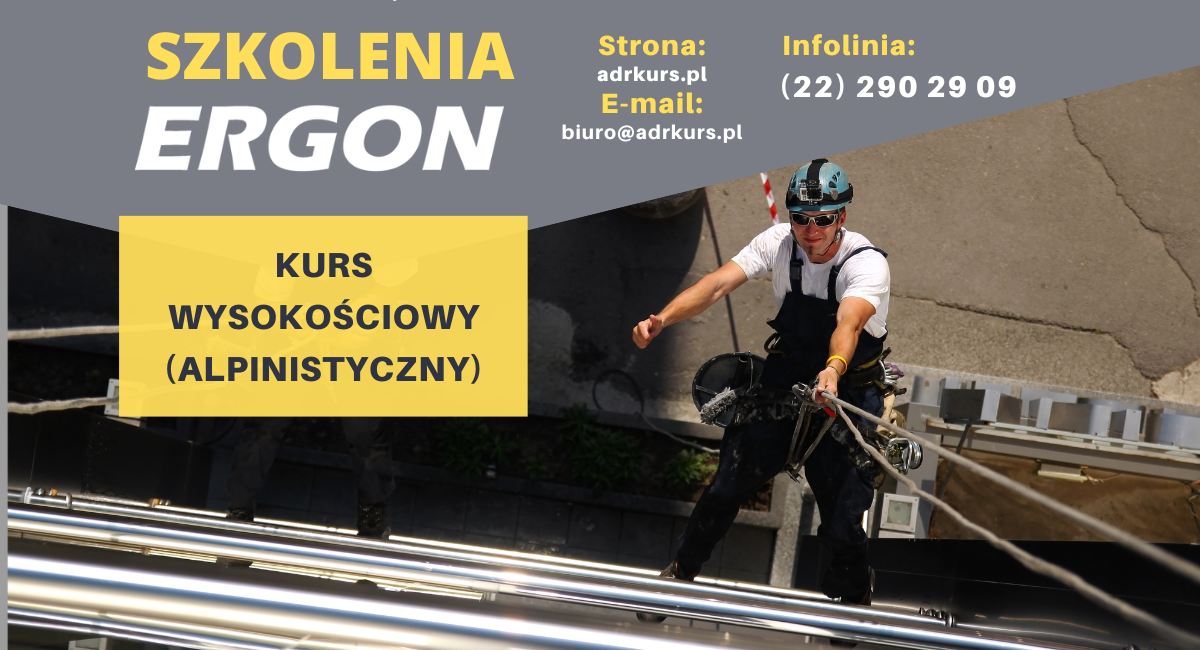Building access training

Building access - course
Working at height involves great danger, harsh weather conditions and risks to life and health. Workers are at risk of falling from great heights in their daily work. Only people who have undergone the appropriate training and have the required qualifications, knowledge and experience can carry out this profession. For this reason, we have organised training courses in building access, which provide authorisations to work at height. The course is designed primarily for those involved in the construction industry.
Participants will learn, among other things, how to secure their work using modern methods of protection at height. The training will also be useful for professionals at height, who will gain practical advice and expand their professional knowledge. Professionals in other fields, such as installers, electricians, etc., can also benefit from the course. In this type of work, it is also useful to be well protected. During training, we place great emphasis on safety and first aid skills. Our classes are not only theoretical, but also practical, so that participants will have all the necessary qualifications, skills and abilities to start working at height. During the training courses, trainees will mainly learn:
- basic principles of labor protection,
- tying knots,
- climbing techniques,
- rescue,
- medical assistance.
In the theoretical classes, participants will learn, among other things:
- how to keep themselves and others safe,
- How to tie knots in order to work properly with ropes,
- how to deal with emergencies.
Scope of the course and examination
Our experienced instructors will teach participants: how to organise work at great heights, carry out an analysis of the situation and eliminate risks. The practical part of the course includes classes in which participants practise working in halls, on structures, at great heights, in all kinds of weather conditions, and there are also practical exercises on indoor structures. Students gain basic knowledge and practical skills in rope ascent and descent, belay methods and technique at height. At the end of the class, everyone takes a theoretical and practical exam. Once they have passed both parts, they receive a certificate, which confirms the skills they have acquired and gives them permission to work at height.
Characteristics and division of work at heights
Work at height includes work where there is a possibility of a worker falling from a height of 1.8 m or more and there is a risk associated with a possible fall of a worker from a height of less than 1.8 m if the work is carried out on mechanical machinery, liquid surfaces or loose fine materials, protruding objects. Work at height is characterised by increased danger, the performance of which is associated with a high number of accidents. Depending on the production conditions, all work at height is divided into:
| Type | Description |
| Work with the use of scaffolding | These are work at height using scaffolding, platforms, towers, cradles, ladders and work carried out on platforms with handrails of 1.1m or more. |
| Work without the use of scaffolding | These are work carried out at a height of 5 m or more and work carried out at a distance of less than 2 m from unblocked height differences greater than 5 m on a bench without handrails or with handrails less than 1.1 m. |
Types of work at heights
It should be noted that the nature of work at height can be very different. Belong to them:
- washing the facade,
- installation of advertising banners,
- preventive maintenance of air conditioning,
- installation of various types of structures both on the façade and inside the building.
Protective measures when working at heights

In order to avoid high occupational injuries, a number of additional measures need to be implemented to ensure safety. The use of personal protective equipment (PPE) is an important part of prevention and risk reduction for professionals working at height. Personal protective equipment includes:
- a helmet protecting against head injuries,
- goggles,
- shields or screens to protect the eyes from floating dust particles and bright light,
- protective gloves,
- appropriate type of shoes that protect against foot injuries,
- signal suit and vests,
- a restraint or positioning system consisting of: a safety belt with a carabiner to which a safety rope or sling is attached,
- anchoring element.
Requirements for equipment for working at heights
There are no general requirements as to the composition of personal protective equipment, it all depends on the work performed. However, there are some requirements for the hardware itself:
- must be in good working order and not exceed the acceptable wear and tear,
- must be complete,
- storage must take place in a dry room in accordance with the instructions,
- do not repair it yourself,
- if necessary, tests should be carried out and the result recorded on the product sheet.
What are the requirements for employees when working at height?

There are certain requirements for hazardous work that must be met, otherwise unpleasant situations - from fines to criminal liability - can arise. For this reason, people working in this occupation must be of legal age, have at least an elementary school education, and have undergone an initial or medical examination that tests for any contraindications to working at height and must have received training in health and safety as well as working at height. The safe working at height regime requires that medical examinations and compulsory psychiatric examinations of workers are carried out, and if there are contraindications, the worker is not allowed to work at height. The contraindications must be confirmed by a medical certificate. Only a person who has undergone the relevant training for the profession, has successfully passed the examinations and has the relevant documents may be admitted to work at height.
You are very welcome to contact us and sign up for our course





































